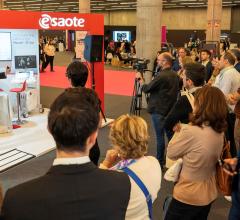
January 11, 2012 – Siemens Healthcare announced that the 2.0 version of the Acuson SC2000 volume imaging ultrasound system has received 510(k) clearance from the U.S. Food and Drug Administration (FDA). This latest version of the Acuson SC2000 system elevates volume imaging in echocardiography, delivering significant performance and imaging enhancements to improve workflow and patient outcomes.
Release 2.0 offers a host of new applications, including the quantification of the 3-D proximal isovelocity surface area (PISA) to assess the severity of valvular disease and volumetric color Doppler. Other applications include a comprehensive package for automated left ventricle analysis (LVA), enabling the auto-detection and tracking of volume contours and Siemens’ IN Focus coherent image-forming technology, which yields a high level of image uniformity and clinical detail. Release 2.0 supports volumetric intracardiac echocardiography (ICE), enabling integration of the Acuson AcuNav ultrasound catheters.
Through the advanced volume analysis application, known as eSie PISA, the user of the Acuson SC2000 system can obtain semi-automatic quantification of the PISA from 4-D color Doppler data. This quantification enables the clinician to eliminate the current practice of 2-D PISA assumptions and improve measurement accuracy by using volumetric color analysis for valvular regurgitation, which affects millions of people worldwide. The examination can be performed on almost all valvular disease patients and delivers in seconds more accurate and effective regurgitant orifice area (EROA) measurements than previously possible, resulting in a faster, more confident diagnosis. Also featured on release 2.0 is eSie velocity vector imaging (VVI) technology; a visual representation to display cardiac contraction-relaxation mechanics, which helps to obtain important clinical information for the analysis of cardiac synchrony, strain and strain rate, fetal heart dysfunction as well as atrial and ventricular assessment.
Reduced exam time with automated left ventricle assessment
The Acuson SC2000 system features eSie LVA volume LV analysis, an automated volume quantitative analysis package designed for left ventricle assessment. This application enables the clinician to detect and track volume contours in one step, reducing exam times and improving consistency. Unlike stitched imaging technology that excludes arrhythmia patients, eSie LVA analysis can be used with all patient types because the Acuson SC2000 system captures the entire heart in one beat, eliminating geometric assumptions.
More clinical detail in every image
The Acuson SC2000 system’s IN Focus technology acquires and processes information at 2.88 gigabytes per second – faster than any other echocardiography system. This enables the user to focus on the entire field of view instead of a single focal zone, revealing more detailed information in one image and ultimately benefiting a patient’s diagnosis.
The latest version of the Acuson SC2000 system also integrates intracardiac echocardiography applications. With the Acuson AcuNav advanced technology, electrophysiologists and interventional cardiologists can obtain critically important ultrasound images from within the heart in real time, enabling them to perform complex procedures with greater precision and confidence.
Improving patient outcomes with real-time full-volume cardiac imaging
Offering these and other innovations, the Acuson SC2000 system marks is the first ultrasound system that enables the production of real-time, full-volume cardiac images in one heart cycle. This capability eliminates the need for electrocardiogram (ECG) gating or stitching, which improves image accuracy. With a processing speed that is 16 times faster than a premium ultrasound system, the Acuson SC2000 system delivers vastly more diagnostic information than conventional 3-D imaging methods, allowing for wider patient access. Integrated into a routine ECG exam, the Acuson SC2000 system offers new workflow pathways to improve diagnostic confidence and efficiency.
For more information: www.siemens.com/healthcare


 August 27, 2024
August 27, 2024 








